Edge of the trees
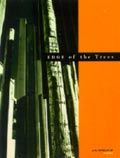
Edited by Dinah Dysart. Historic Houses Trust of New South Wales, $49.50.
It is an unusual, even extravagant move to publish a glossy, large format book entirely about a single artwork, but this is what the Historic Houses Trust of New South Wales has done with Edge of the Trees. The work of the same name, a sculptural installation by collaborating artists Janet Laurence and Fiona Foley, was commissioned by the Trust in 1992 for a position on the politically charged site of First Government House, the forecourt of the Museum of Sydney. The title of the work, and its metaphor – the fringe of trees at the edge of a clearing as a line of contact between apparently conflicting forces, including but not limited to the meeting of Aborigines and settlers at the first landing – were originally derived from a quotation from the historian Rhys Jones, and developed by the MoS senior curator Peter Emmett into the project’s initial concept brief. At times the book reads as a vehicle for the publication of this brief, which is reprinted in full, and which, according to editor Dinah Dysart, is “already being used as a model document for the commissioning of public works of art”. This seems a clear indication of the book’s projected audience – architects and clients looking to follow best practice in “procuring” artworks. To this end, the book provides an unusually comprehensive overview and documentation of all stages of the process, from the initial concept and formulation of the brief, through the competition and research phases, the work of construction and installation, and on to the accolades the installation has received. It avoids (though only narrowly, at times) being a self-congratulatory and descriptive “scrapbook” of images by concentrating on specific accounts by contributors and critics of the work, including a stand-out essay by Andrew Nimmo.
Naomi Stead.
Utzon and the Sydney Opera House
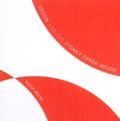
Philip Drew. Inspire Press, $26.95.
This elegant little book is based on a good idea: to relate the history of the Sydney Opera House as a tangle of architectural, political and cultural narratives. To keep things open-ended, Drew musters a multitude of “facts”‚ presented in chronological order under the title “As It Happened 1918-2000”. Readers may thereby follow their own lines of inquiry as they pick their way through the materials that Drew has assembled. This commitment to open-endedness is commendable, and will assist further discussion about the Opera House to proceed more knowledgeably. Such is Drew’s intention, but unfortunately his book is perhaps more limited in this respect than he hopes. We are presented with such a mass of information about Utzon, for example, that the “facts” inevitably privilege a biographical reading of the Opera House design as an expression of his genius. Of course, 1918 is the date of Utzon’s birth, and a prefatory essay explains Utzon’s family history from 1578. Is this really pertinent?
The merits of the Opera House are for Drew all Utzon’s and the faults all those of venal and stupid NSW politicians. This may be an accurate view, but to nudge us to this conclusion Drew tells us that Davis Hughes, NSW planning minister at the time Utzon withdrew from the project in 1966, mendaciously claimed on a number of occassions to hold a science degree from the University of Tasmania. Lying politicians! What a surprise! But when we learn that Hughes moved from 85 to 87 Brown Street, Armidale, NSW in 1959, Drew starts to seem like a retrospective stalker. He has allowed his pleasure and ability in historical sleuthing to mar his book with an irrelevancy. Some of the other information is even less useful: the listing of Princess Diana’s death in 1997 pushes the bounds of the contextual too far. It is a reminder, however, that despite the cool Scandinavian quality of its design, the Opera House is also now caught up in the economies of kitsch. Drew ends his list of “facts” with the opening ceremony of the Sydney Olympics (a triumph of tackiness) but other moments that perhaps warrant researching and recording are the Opera House’s first appearance on tourist t-shirts and tea towels, in Ken Done daubs and on the shoulders of Dame Edna frocks. These are a measure of the iconic role the building now has and are also a part of its complex story.
Paul Walker.
Almost Full Circle: Harry Seidler
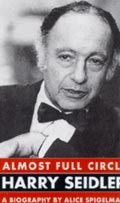
Alice Spigelman. Brandt & Schlesinger, $45.
This is the biography of an architect, not an architectural biography. As such, certain aspects may disappoint the architectural reader. Where, for example, are the sustained critical assessments of the work, of influences, and of ideas? Where are the photographs and drawings of the buildings mentioned? Instead the illustrations are family snapshots. However, once the book is understand on its own terms, architects too will be engaged. Biography has its own (slightly voyeuristic) pleasures, and one cannot help but be impressed and intrigued by the tenacity and verve which has carried Seidler though his career. Perhaps the most interesting section of the book is the early part, dealing with Seidler’s wartime experiences of flight, internment and deportation. Too often we forget that postwar is just that – after the war. And that the architects who survived, and set out to make the brave new world, had encountered (in different ways and to different degrees) traumas many of us can hardly imagine.
I do, however, have one serious quibble. The chapters dealing with the 70s, 80s and 90s make frequent reference to Seidler’s fight against postmodernism. But postmodernism is explained in the most banal terms: “an eclectic style of building that took features from different eras for exterior decoration”.
While some design practices may have degenerated into this, postmodern thinking was driven by a set of quite real concerns, many of which arose out of modernism’s less attractive aspects. A more balanced explanation of this is warranted, rather than the simplistic stylistic account supplied.
UNSW Campus: A Guide to its Architecture, Landscape and Public Art
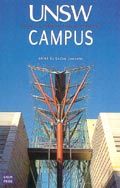
Edited by Desley Luscombe. UNSW Press, $10.95.
This slim booklet documents the built environment of the UNSW Kensington campus – the result of two main phases of facility building: the 1960s, and the 1990s on. Each project gets a page or two, with black and white photographs.
Corners
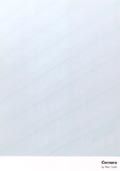
Peta Carlin. $16.
This tiny catalogue presents Carlin’s photographs of “late modern” facades in a fold-out format. Deploying photography as a “critical and investigative tool”, Carlin asks “What if the bad copy, in order to redeem its ways, redoubles its efforts, buckles under the pressure, and folds, assuming the very form it is trying to emulate.” The answer, as presented here, is elegant and engaging.















